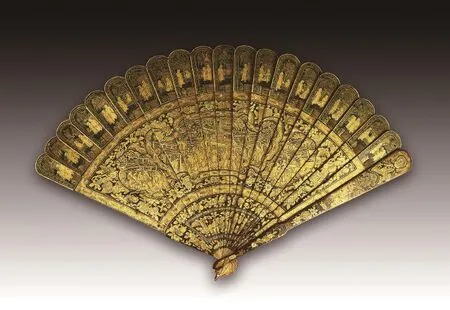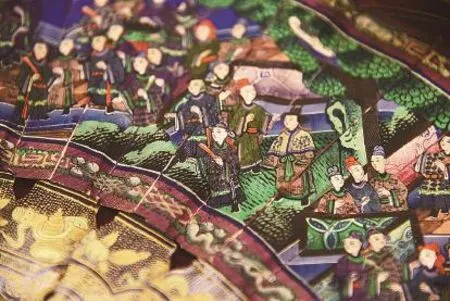SINOMANIA IN THE SCOPE OF FAN
Text by Madz Translation by Shi Yu Photos provided by Canton1840
SINOMANIA IN THE SCOPE OF FAN
Text by Madz Translation by Shi Yu Photos provided by Canton1840

In the 18th century, tons of fans with resplendent patterns and ornamentations were shipped across the ocean to Europe, where they became the status symbol of the upper class in Europe. These fans satis fied westerners’ longings for the mysterious east. There was once a time when fans were the“must-have” accessory for noble women, and young ladies even developed a set of fan-gestures as a basic sign language for social occasions.
As the 17th Century emerged the fan began to be recognized as a symbol of Chinese culture. In 1599, the establishment of the East India Company opened a door through which Chinese products, including ivory sculptures, gold-painted carpentry, folding fans and umbrella were sold to Europe.
It was during the reign of Emperor Qianlong (1735-1796) and the development of ivory craftwork that fan exporting experienced its golden age. There were countless innovations of fans in terms of style, material and pattern. Those that were developedinclude the appeared ivory folding fan, the ivory circular fan, tortoise-shell folding fan, and so on. Fans sold to Europe at that time became a great big in fluence on the emergence of the“ Rococo” style. the style o“f Rococo”.
Ancient fans were made of bamboo, according to Shuowen Jiezi (literally Explaining Graphs and Analyzing Characters, an early 2nd Century Chinese dictionary from the Han Dynasty) by Xu Shen. Later, the range of materials used in fan production gradually extended—various rare and expensive materials were adopted to increase the stylishness of the fan. For then onwards, materials used varied in quality and started to become a crucial factor in donating different classes of society.

扇解“中国热”
18世纪,一批批纹饰华美的扇具漂洋过海,成为欧洲上流社会的身份象征。这些外销扇满足了西方人对神秘东方的憧憬,一时间贵族妇女人手一扇,少女们更利用执扇的动作作为社交场合的必用手语。
扇子成为一大“中国象征”的缘由,最初始于16世纪末。1599年东印度公司成立,包括象牙雕刻、金漆木器、摺扇摺伞在内的广州外销产品开始进入欧洲。
乾隆年间,广州象牙工艺得到发展,迎来了出品扇具的黄金年代。外销扇从式样、材质到花纹等不断创新:有象牙摺扇、象牙团扇,纸面摺扇、纸面团扇、疊丝银扇、玳瑁摺扉、金漆摺扇、檀香摺扇,甚至还有粘有羽毛的纸面刻花人物金漆摺扇等。这个时期出品的外销扇甚至对欧洲“洛可可”风格的出现产生了深远影响。
古代扇子是用竹料制成的。据东汉许慎《说文解字》记载:“箑,扇也,从竹疌声”。后来,制扇材料逐渐发展至各种名贵材质,已增加其装饰性。从此,使用不同材质的扇具开始成为区别阶层及地位的要素。
Canton1840 is an initiator of mobile museums. Mr. Wen Shi, the late owner of the Canton1840 mobile museum, has been collecting forty thousand items representing Lingnan region culture and European culture in over forty years. (WeChat: canton1840)
文仕文化博物档案馆是“近代海丝文化流动博物馆”概念的创导者。前馆长文仕先生历经40多年对珠江岭南地域文化及欧洲百年文化的搜集,收藏了近40000件博物馆级珍贵史料文物。(官微“canton1840”)

